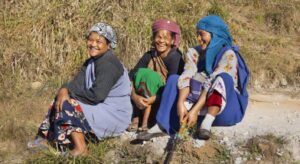 The World Bank’s feature, “Restoring the Environment and Helping Communities in Meghalaya,” highlights the transformative impact of the Meghalaya Community-Led Landscape Management Project (MCLLMP), launched in 2018. This initiative, funded by a $48 million World Bank loan, aims to restore degraded landscapes, enhance biodiversity, and empower local communities in sustainable natural resource management.
The World Bank’s feature, “Restoring the Environment and Helping Communities in Meghalaya,” highlights the transformative impact of the Meghalaya Community-Led Landscape Management Project (MCLLMP), launched in 2018. This initiative, funded by a $48 million World Bank loan, aims to restore degraded landscapes, enhance biodiversity, and empower local communities in sustainable natural resource management.
Key Achievements:
Land Restoration: The project rehabilitated over 46,700 hectares of land, surpassing its initial target of 31,510 hectares. Efforts included afforestation, agroforestry, soil conservation, and innovative treatments for mining affected areas.
- Community Governance: Establishment of 400 Village Natural Resource Management Committees (VNRMCs) ensured localized planning and implementation. These committees, with mandated gender parity, oversaw critical interventions like spring rejuvenation and soil erosion control.
- Forest Management: Over 110,000 hectares were brought under Forest Management Plans (FMPs), including 15,444 hectares under Community Natural Resource Management Plans (CNRMPs), with the remainder under Payment for Ecosystem Services (PES).
- Biodiversity Conservation: The number of People’s Biodiversity Registers expanded from 15 to 310, and 3,000 springs were rejuvenated across the project villages.
- Livelihood Enhancement: By promoting sustainable agricultural practices and supporting community nurseries, the project created alternative income opportunities. The PES scheme incentivized conservation by rewarding communities for maintaining forest health.
- Empowering Women and Youth: Women constituted 52% of VNRMC members, and over 13,000 Village Community Facilitators (VCFs), many of them youth, were trained, creating a skilled workforce adept at sustainable resource management.
The World Bank regards MCLLMP as a replicable model for community-led natural resource management, recommending its adoption in other regions. The integration of GIS tools, community engagement, and landscape management practices has proven effective in achieving sustainable outcomes.
Source: World Bank
